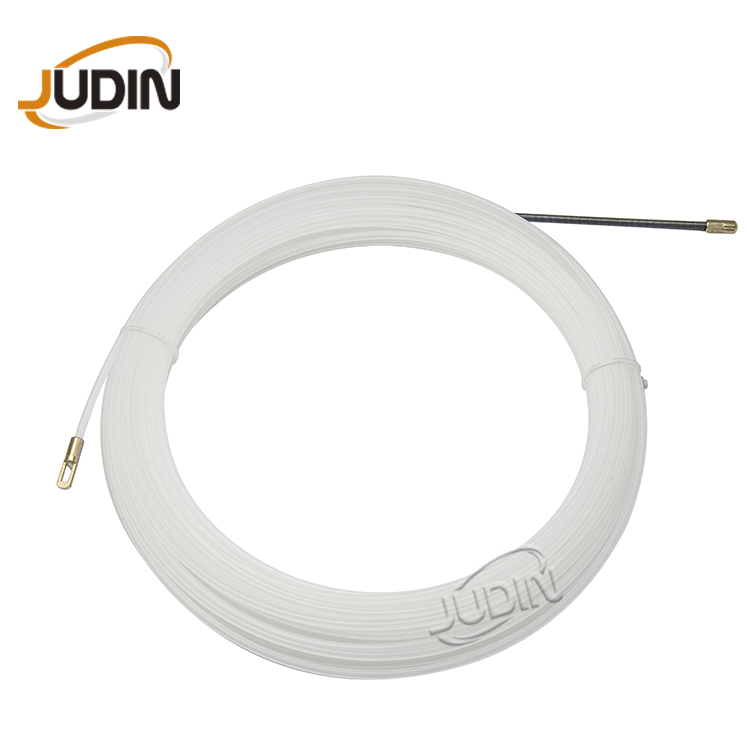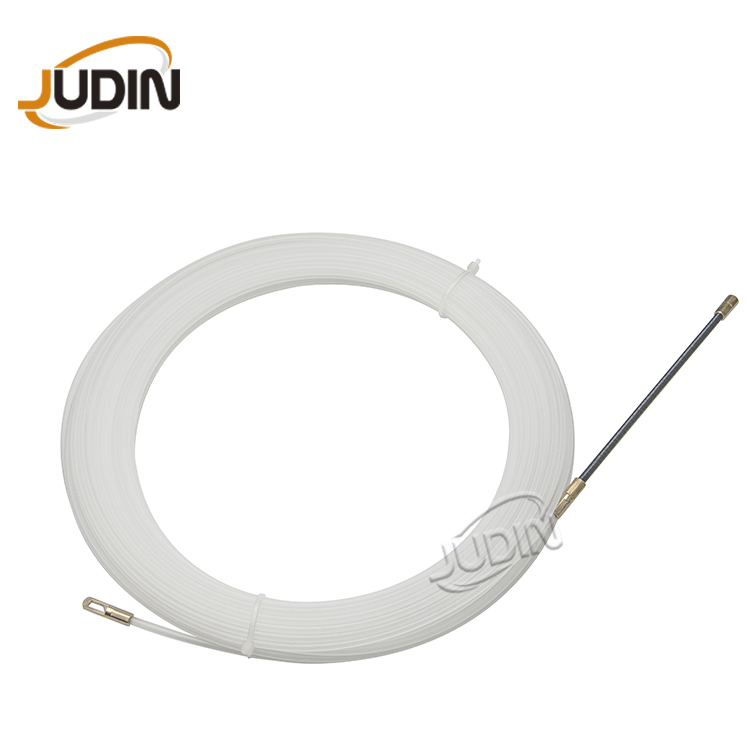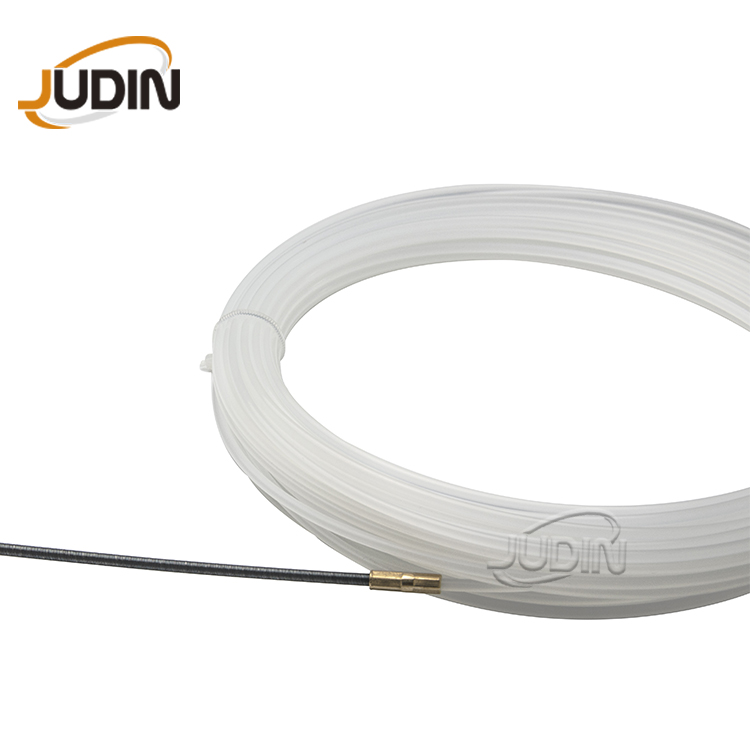Have you ever struggled to pull wires through cramped spaces or tricky conduits? Fish tape is here to make your life easier. This handy tool helps you guide wires through walls and tight areas without frustration. Whether you’re a DIYer or a pro electrician, fish tape saves time and makes wiring tasks a breeze.
Key Takeaways
- Fish tape helps pull wires through small spaces easily. It makes electrical work quicker and less stressful.
- Pick the right fish tape for your job: nylon bends well, steel is strong, and fiberglass lasts long.
- Stay safe by turning off power, using non-metal tape, and wearing safety gear when using electrical tools.
Understanding Fish Tape
What Is Fish Tape
Fish tape is a tool that helps you pull wires through tight spaces, walls, or conduits. It’s a long, flexible strip made from materials like nylon, steel, or fiberglass. You can think of it as a guide that makes wiring jobs much easier. One end of the fish tape has a hook or loop, which you attach to the wire. Then, you push or pull the tape through the space where the wire needs to go. It’s like threading a needle but on a larger scale!
This tool is especially useful when you’re working in areas that are hard to reach. For example, if you need to run wires behind a wall or under a floor, fish tape becomes your best friend. It’s designed to save you time and effort, making it a must-have for anyone tackling electrical projects.
Why Is Fish Tape Essential for Wiring
If you’ve ever tried to pull wires without the right tools, you know how frustrating it can be. Fish tape solves this problem by giving you a simple and effective way to guide wires through tricky spaces. It’s essential because it makes wiring jobs faster, safer, and less stressful.
Imagine trying to push a wire through a long, narrow conduit. Without fish tape, the wire might get stuck or tangled. But with fish tape, you can easily navigate bends and turns. It’s like having an extra set of hands to help you out. Whether you’re a professional electrician or a DIY enthusiast, fish tape is a game-changer.
Types of Fish Tape Materials and Their Uses
Fish tape comes in different materials, each with its own strengths. Here’s a quick look at the most common types:
- Nylon Fish Tape: Lightweight and flexible, nylon fish tape is perfect for navigating tight bends. It’s also non-conductive, which makes it safer to use around electrical wires.
- Steel Fish Tape: Known for its strength, steel fish tape is ideal for heavy-duty jobs. It’s great for pulling multiple wires through long or straight conduits.
- Fiberglass Fish Tape: This type combines flexibility and durability. It’s non-conductive like nylon but can handle tougher tasks. Fiberglass fish tape works well in both residential and commercial settings.
Each material has its own advantages, so you can choose the one that best fits your project. For example, if you’re working in a home with lots of tight spaces, nylon fish tape might be your go-to option. On the other hand, steel fish tape is better for industrial jobs that require extra strength.
How to Use Fish Tape Effectively
Step-by-Step Guide to Using Fish Tape
Using fish tape might seem tricky at first, but it’s actually pretty simple once you get the hang of it. Follow these steps to make your wiring tasks easier:
- Prepare the Area: Before you start, clear the workspace. Make sure the conduit or wall cavity is free of debris or obstructions.
- Feed the Fish Tape: Insert the fish tape into the conduit or space where the wire needs to go. Push it gently but firmly, guiding it through bends and turns.
- Attach the Wire: Once the fish tape reaches the other end, secure the wire to the loop or hook at the tape’s end. Use electrical tape to keep the connection tight.
- Pull the Tape Back: Slowly pull the fish tape back through the conduit, bringing the wire along with it. Keep the wire taut to avoid tangling.
- Finish the Job: Once the wire is through, detach it from the fish tape. Then, pull the tape completely out and store it properly.
Pro Tip: If you’re working with multiple wires, bundle them together before attaching them to the fish tape. This saves time and effort.
Common Challenges and Solutions
Even with the best tools, you might run into a few hiccups. Here are some common challenges and how to tackle them:
- The Tape Gets Stuck: This can happen in tight bends or rough conduits. Try wiggling the tape gently to free it. If that doesn’t work, pull it back slightly and adjust your angle before pushing again.
- The Wire Slips Off: A loose connection can cause the wire to detach. Double-check that the wire is securely taped to the fish tape before pulling.
- Difficulty Navigating Bends: Tight corners can be tricky. Use a flexible fish tape, like nylon, to navigate these areas more easily.
- Conduit Is Too Long: For longer runs, you might need to feed the tape in sections. Mark the tape as you go to track your progress.
Note: Patience is key. Rushing can lead to mistakes or damage to the wire.
Safety Tips for Using Fish Tape
Safety should always come first when working with electrical tools. Here are some tips to keep in mind:
- Turn Off Power: Always shut off the electricity to the area you’re working on. This reduces the risk of shocks or accidents.
- Use Non-Conductive Tape: If you’re working near live wires, choose a non-conductive fish tape, like nylon or fiberglass, to avoid electrical hazards.
- Wear Protective Gear: Gloves and safety glasses can protect you from sharp edges or unexpected snags.
- Inspect the Tape: Check the fish tape for damage before using it. A frayed or broken tape can snap under pressure.
- Work Slowly: Take your time when feeding or pulling the tape. Quick movements can cause the tape to kink or the wire to tangle.
Reminder: Always follow the manufacturer’s instructions for your specific fish tape. This ensures you’re using it correctly and safely.
Practical Tips and Features of Fish Tape
Techniques for Pulling Wires Through Tight Spaces
Pulling wires through tight spaces can feel like solving a tricky puzzle. But with the right techniques, you can make it much easier. Start by choosing a fish tape that matches your project. For tight bends or narrow conduits, a flexible option like nylon works best. Feed the tape slowly and steadily into the space, letting it guide itself around corners. If it gets stuck, don’t force it. Instead, wiggle it gently or pull it back slightly before trying again.
When attaching wires, secure them tightly to the fish tape’s loop or hook using electrical tape. A snug connection prevents the wire from slipping off during the pull. If you’re working with multiple wires, bundle them together neatly before attaching them. This keeps everything organized and reduces the chance of tangling.
Pro Tip: Use a flashlight to inspect the conduit or space beforehand. Spotting potential obstacles early can save you time and frustration.
Key Features of High-Quality Fish Tape
Not all fish tapes are created equal. High-quality ones stand out with features that make your job easier. Look for a tape made from durable materials like nylon, steel, or fiberglass. Nylon is lightweight and flexible, while steel offers unmatched strength for heavy-duty tasks. Fiberglass combines flexibility with durability, making it a versatile choice.
A smooth, rounded head on the tape is another must-have feature. It helps the tape glide through bends without snagging. High tensile strength is also important, especially if you’re pulling multiple wires at once. Lastly, a comfortable handle or reel design makes feeding and retracting the tape less of a hassle.
Accessories That Enhance Fish Tape Functionality
The right accessories can take your fish tape to the next level. Wire-pulling lubricant is a game-changer for reducing friction in tight or long conduits. It helps the tape move smoothly and prevents wear and tear. Pulling grips are another handy add-on. These attach to the wire and provide a secure hold, making it easier to pull heavier loads.
Some fish tapes come with interchangeable heads, like hooks or eyelets, for added versatility. You can also find storage reels that keep your tape organized and tangle-free. Investing in these accessories can save you time and effort on every project.
Fish tape makes wiring jobs faster and easier. Its durability and flexibility help you tackle tricky spaces without hassle. Whether you’re a beginner or a seasoned electrician, this tool simplifies your work and saves time. Add fish tape to your toolkit, and you’ll wonder how you ever managed without it!
 |
 |
 |
FAQ
How do I choose the right fish tape for my project?
Pick a material based on your needs. Nylon works for tight spaces, steel handles heavy-duty tasks, and fiberglass offers flexibility and durability.
Can fish tape be used for non-electrical projects?
Absolutely! You can use fish tape for pulling cables, ropes, or other materials through tight spaces. It’s versatile and handy for various tasks.
What’s the best way to store fish tape?
Keep it in a storage reel or case. This prevents tangling and protects the tape from damage. A well-organized tool lasts longer.
Post time: May-26-2025







